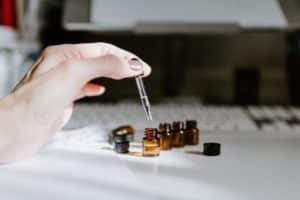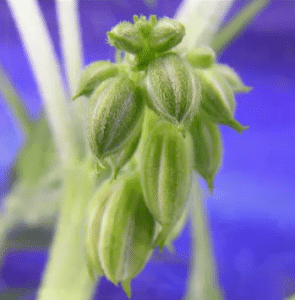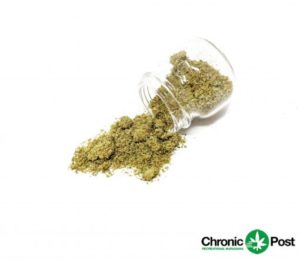We know that cannabis is a less harmful substance than those in favor of the Drug War would have you believe. Even in recreational use, cannabis does substantially less damage than alcohol. Even in states with recreational marijuana laws, cannabis is still handled differently than alcohol.
When it comes to medical cannabis, not only is it less harmful than some other treatments, but it’s prohibition causes more painful effects – like preventing access to real marijuana, but allowing access to synthetic marijuana.
Our friends over at GrowWise have put together a great argument for cannabis harm reduction:
Is Cannabis Harm Reduction?
This week’s post is a special contribution from Dessy Pavlova, Vice Chair of Canadian Students for Sensible Drug Policy (CSSDP).
Medical cannabis is often used to help break the cycle of chronic pain for various conditions, and its overall therapeutic effects can help meet many health goals, including something as simple as getting a good night’s sleep. Cannabis is also sometimes used as a safer alternative for or in conjunction with pharmaceutical medication as a form of harm reduction.
In the case of improving your quality and duration of sleep, using cannabis in lieu of highly addictive pharmaceutical sleep aids limits the likelihood of side effects like dependence or withdrawal, which reduces harm. Some individuals may use cannabis in order to limit the use of other legal recreational substances such as alcohol, or illegal substances obtained from unregulated sources. Cannabis is safer than many medical and recreational substances, and in itself can act as an agent of harm reduction. There are, though, potential harms of using cannabis itself. With an upcoming legal cannabis market, it’s important all individuals considering trying cannabis are as aware of the risks as well as the benefits of cannabis use, and especially how best to reduce any potential harms.
What is Harm Reduction?
Harm reduction is a public health strategy that acknowledges people use drugs in various ways and works to decrease negative consequences, dangers, and damage caused by use.
An example of harm reduction for illicit drug use are Safe Injection Sites, legal facilities that allow for people who use intravenous drugs to safely administer them in the presence of healthcare professionals without the fear of arrest or accidental overdose. An example of harm reduction for cannabis use could be finding an alternative to exposing yourself to the harms of smoking, such as ingesting or vaporizing. There are many other harm reduction strategies that can be implemented for pharmaceuticals, for legal substances like tobacco or alcohol, and for illegal drugs obtained from unregulated street sources, and cannabis may play a significant part.
How Cannabis is Harm Reduction
Cannabis is being studied in relation to the substitution effect because of its large safety margin. The substitution effect is a method of harm reduction that provides a less harmful alternative to a more harmful substance. Cannabis has the potential to replace multiple substances as it provides limited risk in relation to other drugs.In one study, 40% of the sample of patients from a medical cannabis dispensary used cannabis as a substitute for alcohol, 26% used it as a substitute for illicit drugs, and 65% used it as a substitute for prescription drugs. The reasons for using cannabis as a substitute varied from fewer adverse effects and less withdrawal potential, but 57% of patients claimed that cannabis provides better symptom management. This is promising, considering opioid-related overdoses are currently a regular occurrence in Canada, with a widespread fentanyl epidemic.
Evidence shows that endocannabinoid and opioid receptors may interact in a way that enhances the pain-relieving effect of opioids when combined with cannabis. This allows for patients to reduce the number of opioids they need to take, while simultaneously reducing their pain, thereby lowering the potential for overdose. Interestingly, patients are recommended to use whole plant cannabis as opposed to chemical derivatives that may not have the cannabinoids and terpenes needed. CBD is the main cannabinoid known to help treat dependency issues, as well as mental health conditions like depression, anxiety, and PTSD.
Recent evidence also shows that cannabinoids interact with the brain reward system in a way that modulates stimulant addiction, and may further the research on cannabis as harm reduction for other addictive substances. When viewed from a medical perspective, cannabis is an effective harm reduction agent because it has a wide margin of safety, and a high benefit-low risk ratio when compared to other standard medications and street-obtained drugs. This is not to say that cannabis does not have potential harms of its own.
Harm Reduction Strategies for Patients
Every substance can be harmful, and knowing the potential magnitude of harm, in proximity, allows for a reduction. The potential harms of cannabis are often talked about in relation to youth use. There is roughly a 9% chance likelihood of experiencing addiction symptoms in relation to cannabis use, with a higher occurrence at younger ages. There are few physical addiction symptoms, unlike most pharmaceuticals or recreational substances, which generally have dramatically higher addiction rates, relapse potential, and psychological dependency. Cannabis also may be linked to the development of early-onset schizophrenia, especially for younger users, which often makes physicians tentative to prescribe it. There is also some evidence that cannabis causes symptoms of depression and anxiety in some users. On the flip-side, it’s also often used to treat symptoms of depression and anxiety.
There are many ways to limit the potential harm of cannabis. The most often talked about physical harms of cannabis are respiratory concerns that stem from smoking. The best way to mitigate these concerns is through choosing a less harmful method of consuming cannabis. Some alternative delivery options might be edibles, topicals or vaporization. In order to maximize the benefits and minimize the harm of cannabis treatment, it is important to also know your ideal dose for various delivery options. For example, eating cannabis will have profoundly different effects than vaporizing and these effects will last longer. This means that the “start low and go slow” approach is incredibly important in the case of ingested cannabis products. It’s important to have a health support team to help you understand how strains, cannabinoids, and flavonoidsmay have different effects on your medical symptoms.
The main way to assure harm reduction for cannabis is to legalize and regulate because the most harm of cannabis use comes from the consequences of prohibition and the related stigma, rather than the use itself. It’s important to provide education on the risks as well as the benefits of cannabis, so as to allow the user to make an informed decision about their use. Under prohibition, around 40,000 registered patients of an expected medical cannabis market of 400,000 have access to reliable medical cannabis education on the risks and benefits. GrowWise Health is always working towards providing better education about cannabis use, its effects, and how patients might use it best for their health.
The Takeaway on Harm Reduction and Cannabis
Cannabis has a far wider range of safety and efficacy than many other substances, especially those substances most often used for pain relief. There are ongoing clinical trials researching cannabis and how it may be able to further offset harms from other substances. There are also many hands-on ways to reduce the harms of cannabis itself, from knowing your dose to opting for a safer method of ingestion. Cannabis use has been proven to be a far less harmful substitute for multiple recreational and medical drugs and the biggest cannabis-related harms continue to arise from prohibition. Harm reduction is about making informed decisions to lessen any potential risk, and GrowWise Health is committed to providing evidence-based cannabis education to help ACMPR patients choose their methods of use wisely.

























